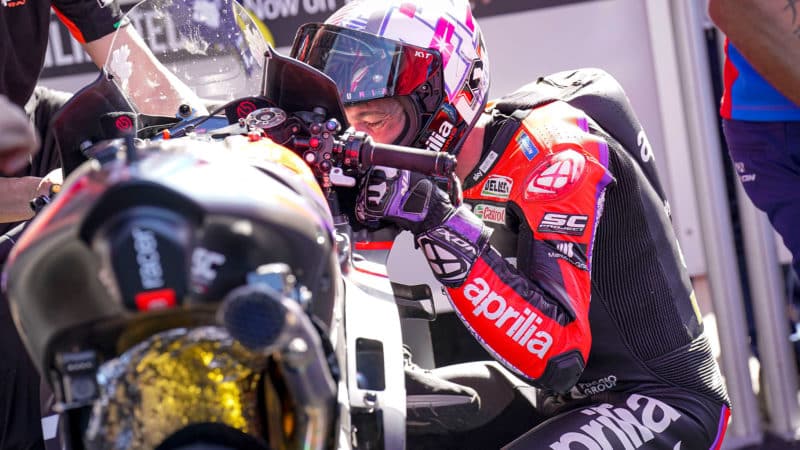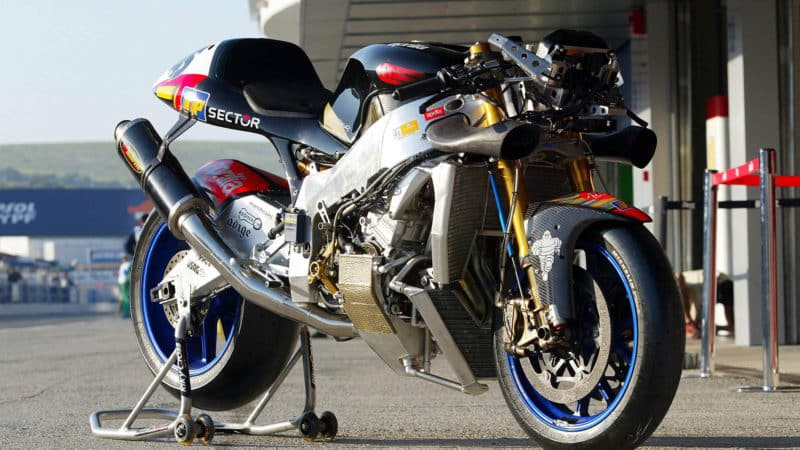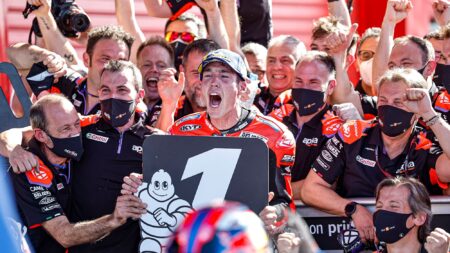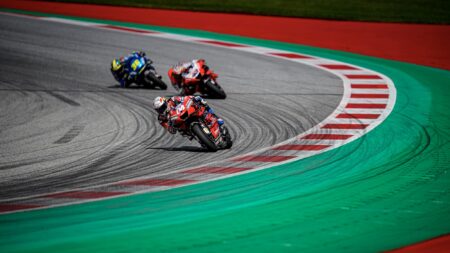In other words, the ART wasn’t a proper MotoGP bike, but Aleix Espargaró rode one to several impressive top-ten finishes in 2012, riding for Jorge Martinez’s team, occasionally hassling a prototype bike or two, costing ten times more.
Three years later Aprilia returned to MotoGP with a factory team, initially using an upgraded RSV4 engine. Only in 2016 did the company start its current, fully prototype RS-GP project, using a narrow-angle V4, instead of the wider 90-degree configuration used by Ducati and Honda.
A 72-degree vee kept the RS-GP short but also made the bike taller. For this and other reasons the machine was never fully competitive.
Then everything changed in 2019 and 2020, when Piaggio management decided to start spending proper money to achieve success.
In 2019 the company hired former Ferrari Formula 1 staffer Massimo Rivola as Aprilia Racing CEO, allowing chief engineer Romano Albesiano to concentrate on engineering, instead of trying to run the team and build the bike.
And in 2020 the RS-GP got an all-new 90-degree engine – after a quarter of a century of attempts at MotoGP glory Aprilia was finally on the right road.
The 90-degree RS-GP’s first season was difficult, because the aero and engine upgrades that Aprilia should’ve been allowed were cancelled due to Covid, but it was immediately obvious that the new bike had huge potential.
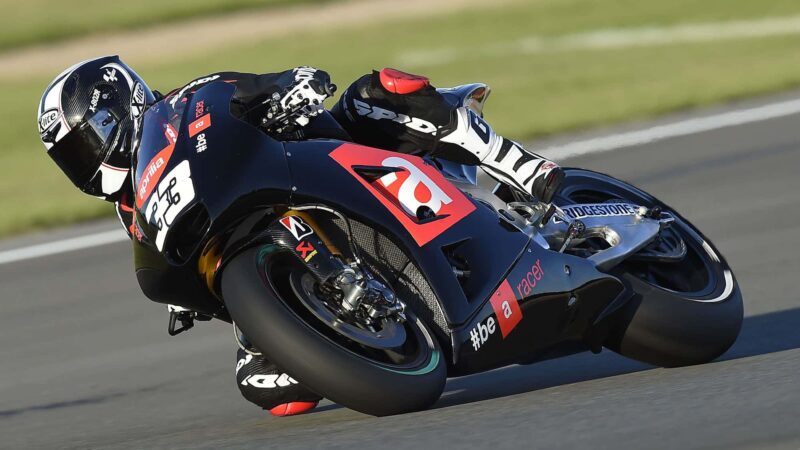
Marco Melandri aboard the first RS-GP in 2015, the bike equipped with an upgraded RSV4 superbike engine
Aprilia
Some of that potential emerged last year, taking Espargaró to the factory’s first four-stroke MotoGP podium, at Silverstone. Then seven months later its first victory.
So what makes the RS-GP a MotoGP winner?
Somehow Aprilia has always managed to make its V4 MotoGP bikes very rider-friendly, more so than Ducati, Honda and KTM. The RS-GP seems to combine the positives of a V4 (more horsepower) and an inline-four (better handling), so it’s a bit like a V4 version of Yamaha’s YZR-M1.
Albesiano, who started out as a Cagiva chassis engineer in the early 1990s, isn’t exactly sure how he has achieved this, because it’s simply his way of engineering a racing motorcycle, so it’s in the RS-GP’s DNA.
“The bike does look user-friendly,” says Mats Larsson, Öhlins racing manager, who had worked with Aprilia throughout. “Working with them is very good because they really listen to you and they’re very open-minded, so we have a good dialogue and they make the bike work well. Also, they’ve done their homework on the engine side.”
The RS-GP’s engine is also friendlier than most V4s, with a very sweet build from low rpm, so when the rider first touches the throttle at full lean he can look after the all-important edge of the rear tyre.
During Sunday’s race Espargaró’s RS-GP was the third fastest bike, at 212.6mph/342.2kmh, just behind the Ducatis of Jorge Martin (213mph/342.9km/h) and Pecco Bagnaia (213.9mph/244.3km/h).

